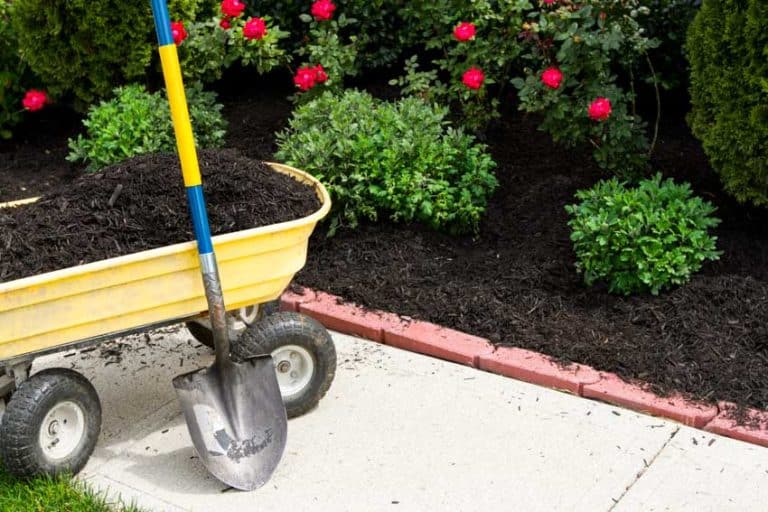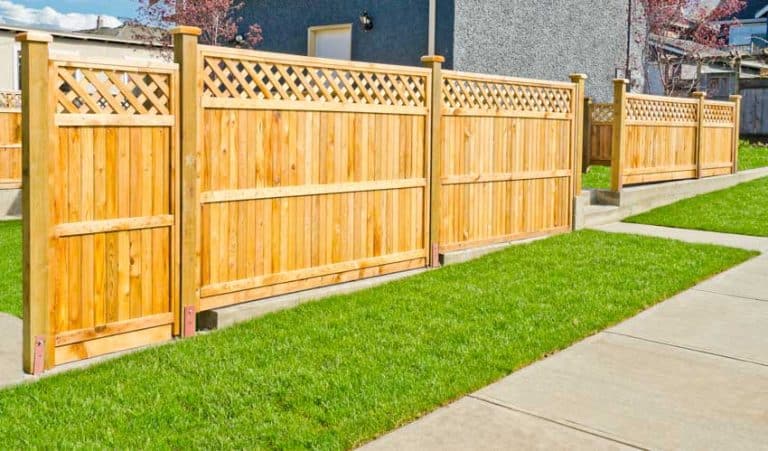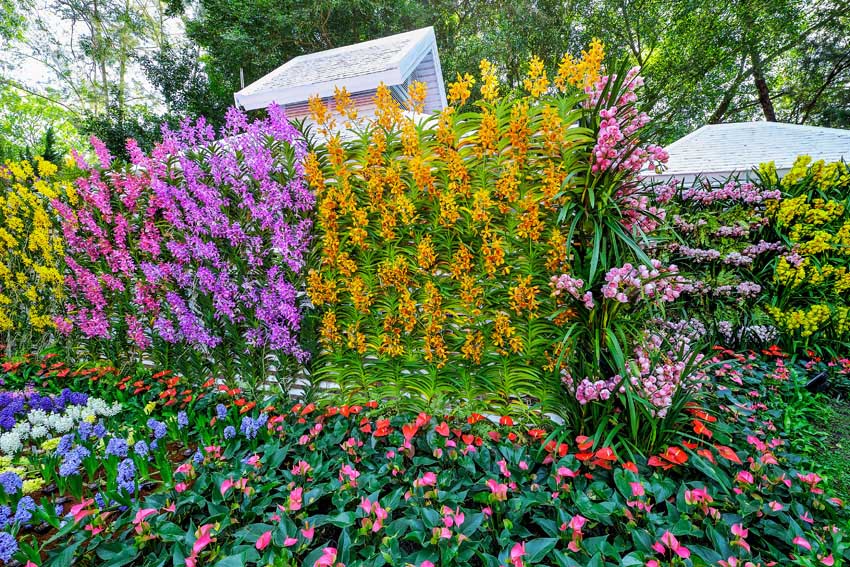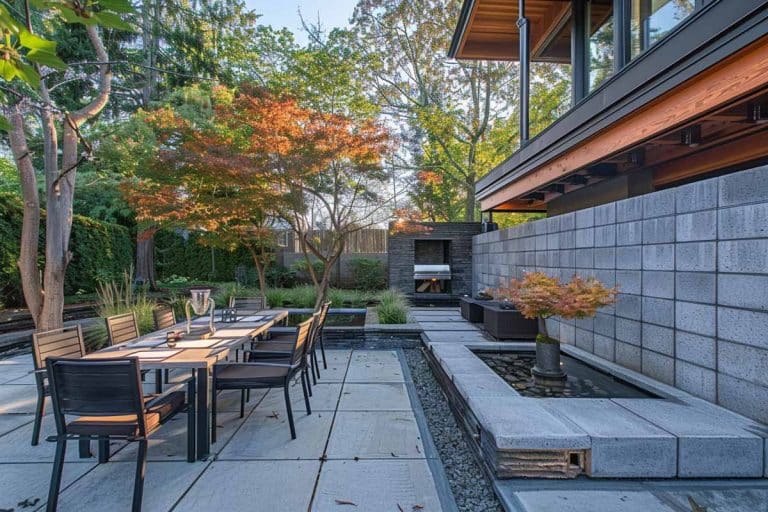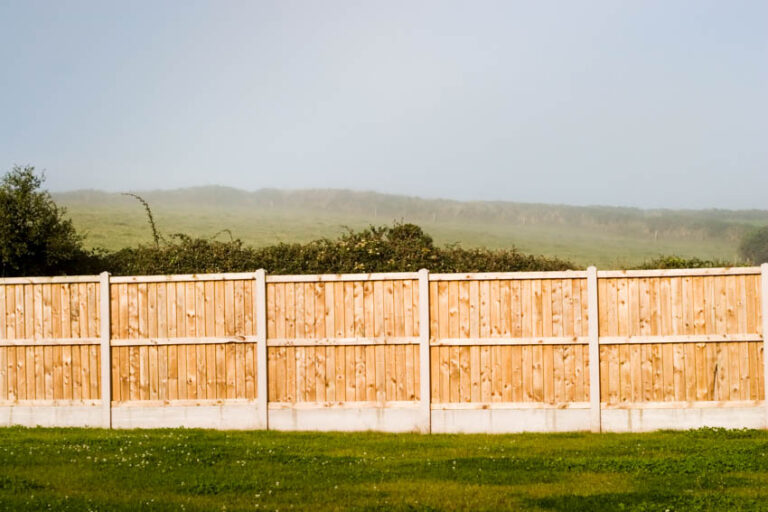Types Of Fences For Windy Areas
In this guide you’ll find the types of fences for windy areas including the different designs, materials, fence bracing tips, and the best fence for hurricanes.
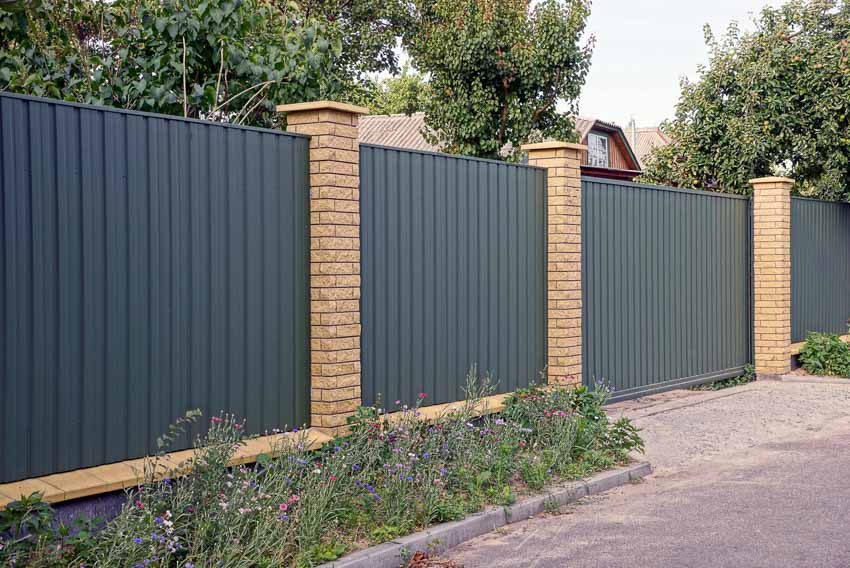 When a fence needs to be installed in an area with frequent strong winds, choosing the best types of fences for windy areas is essential. Often, the location of a property affects the amount of wind speed.
When a fence needs to be installed in an area with frequent strong winds, choosing the best types of fences for windy areas is essential. Often, the location of a property affects the amount of wind speed.
Some examples include a yard that backs up against a large, open field, a fence along the coast, or land at the top of a hill. These areas all leave a fence open to exposure against powerful winds and wind gusts.
There’s more than one solution to installing a fence for windy areas, including material, design, and construction. A solid fence is like a wind sail, taking the full force of the wind without letting it pass through its planks.
Many people prefer privacy fences around their property, which are typically aesthetic and durable. However, they are usually designed in a way that catches wind, powerful winds.
Read this informative guide to learn about fences and wind-resistant, the best materials for fences in windy areas, how to reinforce fences against the wind, and the best fences if you live in an area prone to hurricanes.
Wind Resistant Fence Design

A fence may only be necessary for demarcation in situations such as marking off a field, dividing land, or protecting crops. Wire fencing, paddock fencing, and post and rail work well for these situations.
Fence styles determine the amount of wind resistance and if the fence can withstand a bad storm. Semi-solid and slatted fences allow air to pass through and include styles such as Venetian, Louvre, and ornamental iron fences.
Picket Fences

Shadowbox Fences

Trellis Fences
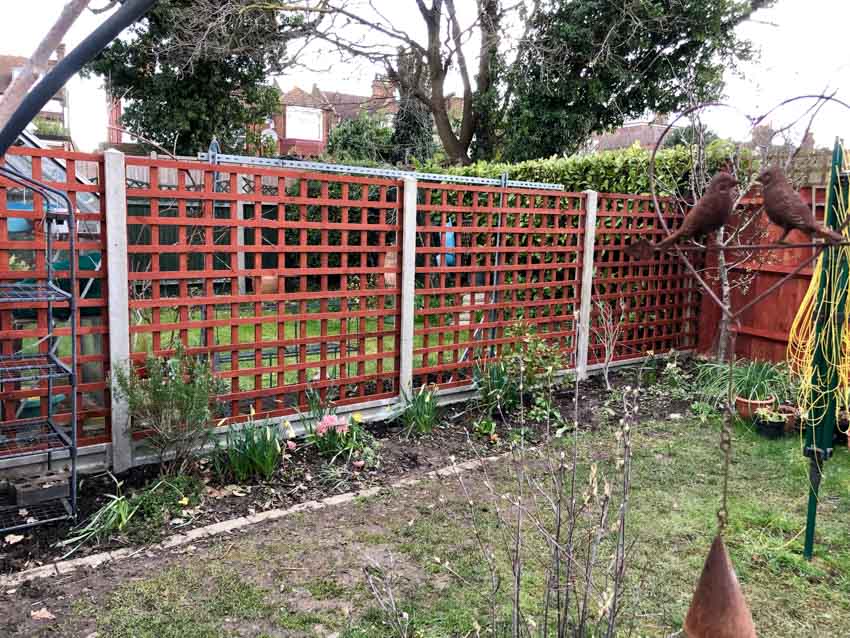
Slatted Fence
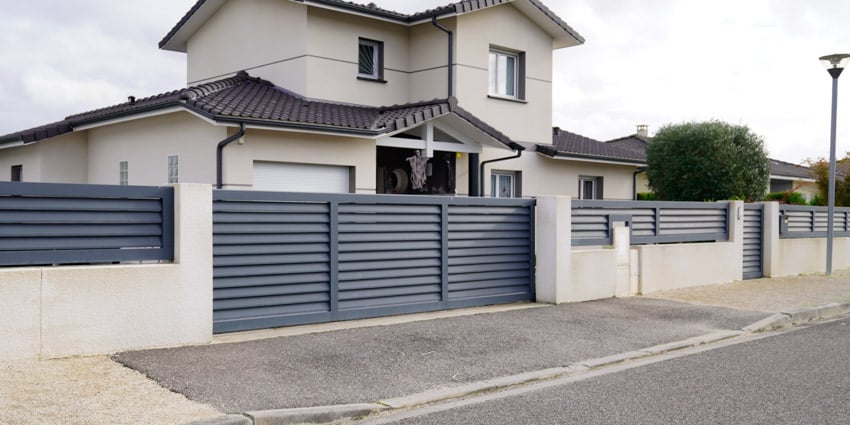
Best Fence Materials for Wind
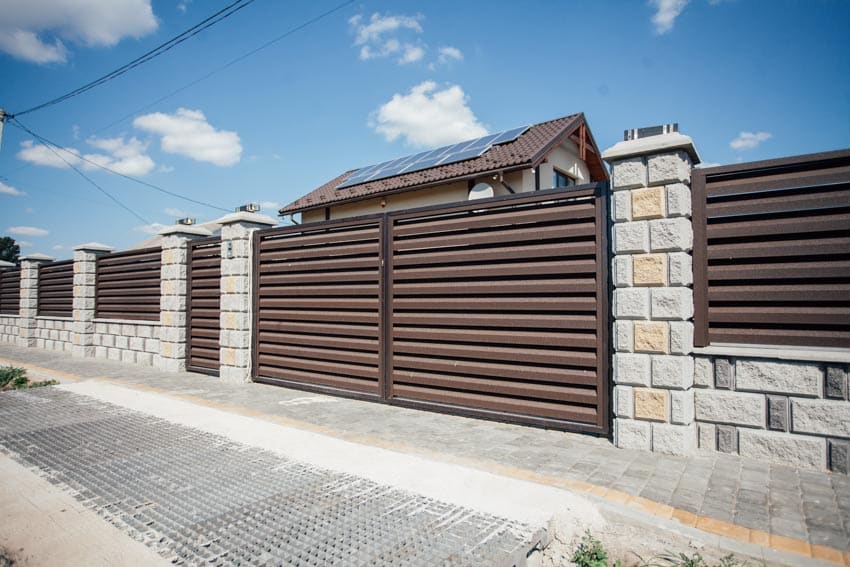
Wood Fences
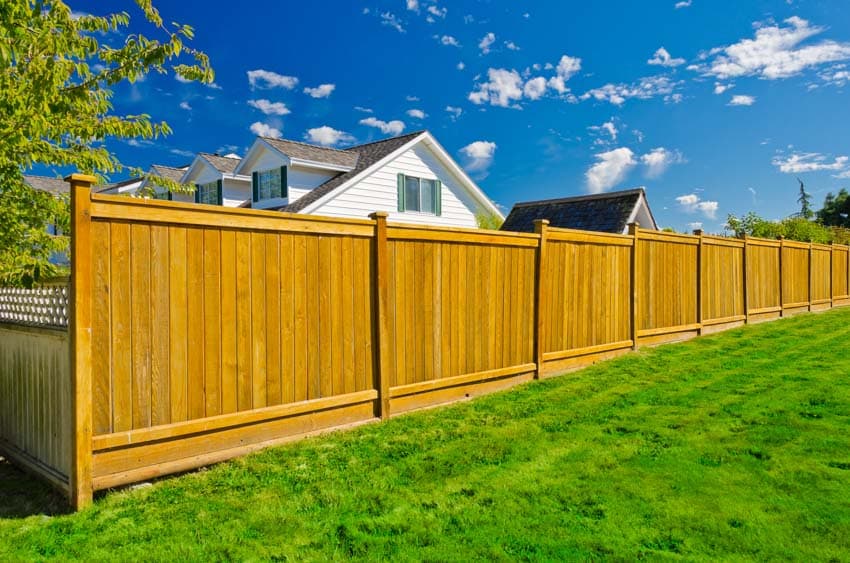
Maintenance is also needed to keep the wood in good condition, and replacement of individual planks. The best wood for fences is a harder variant, such as cedar that adds sturdiness. However, cedar and other hardwoods are very expensive.
Metal Fences
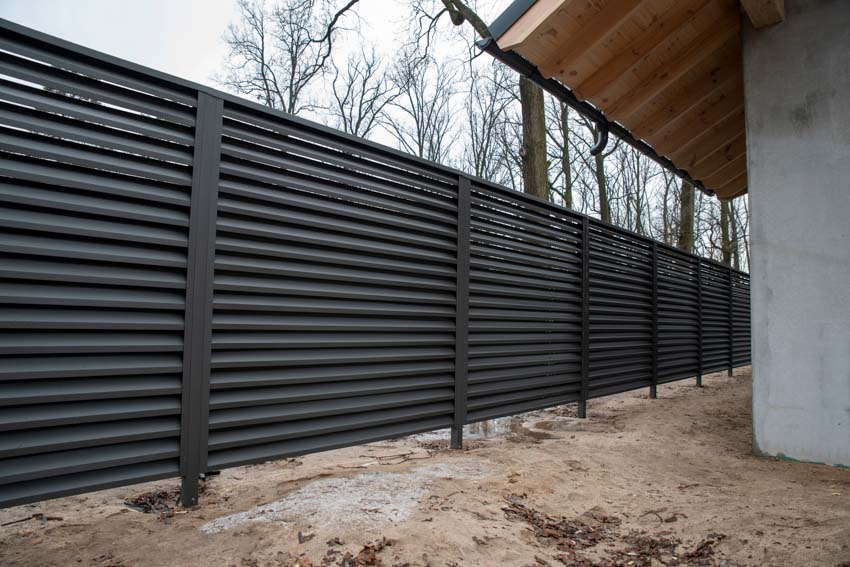
Vinyl Fences
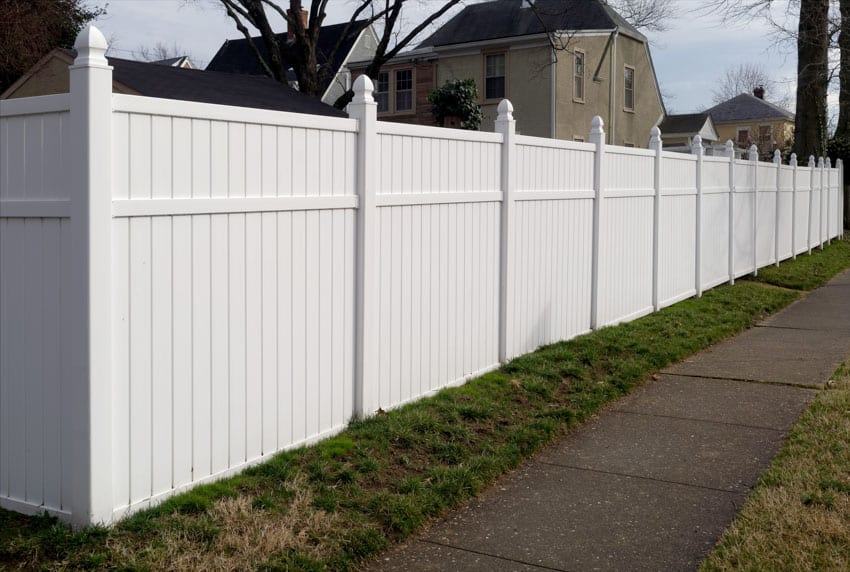
It is also beneficial because this material is low maintenance, it doesn’t rot or rust, and vinyl can be designed to look like natural wood. One drawback to vinyl fencing is warping. Although it may survive powerful winds, it can warp slightly.
Chain Link Fences
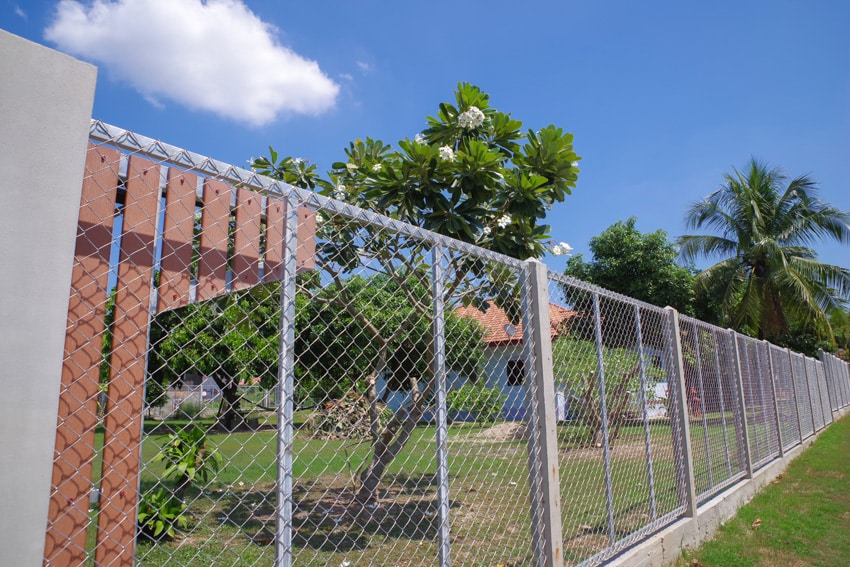
Today different types of chain link fencing offer vinyl coatings to customize the color of the fence and soften any hard edges in the linkage.
Wire Mesh Fencing

Mesh types of wire fences offer many designs and styles to enhance a yard and garden area. Wire-mesh fencing is recommended for areas with constant wind.
How To Brace A Fence Against Wind

• Wood fences can be more wind-resistant if the posts are made from concrete using braces under the ground level.
• Use heavy-duty fence posts with slots that are longer than the panels and after sliding the boards into the slots, screw into place to secure
• Add hurricane straps to wood fences for extra support
• Be sure footings are at least 30 inches deep
• Don’t place posts more than 7 feet apart, with 5 to 6 feet being better
• Use post-saver sleeves to protect wooden posts from rotting
• Be sure to keep wooden fence panels and posts stained to restore oils and protect them from moisture
Best Fence For Hurricanes
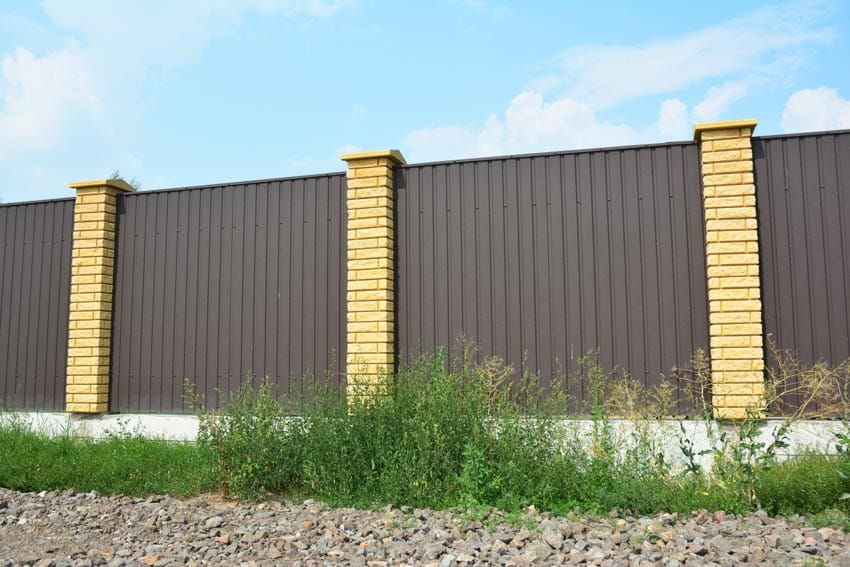
Most hurricane-prone areas use standard hurricane wind-load parameters of fencing that can hold up to 75 mph winds or 3 seconds of wind gusts of 115 mph, such as areas labeled High-Velocity Hurricane zones.
The best types of fences for windy areas are wire-mesh, metal, aluminum, and chain link. In fact, chin link fencing is known as hurricane fencing. If you live in an area with high winds that is also prone to hurricanes, look into the options above to install a fence that can hold its own against the battering winds of these powerful storms.
See more related content in our article about pros and cons of composite fencing on this page.

